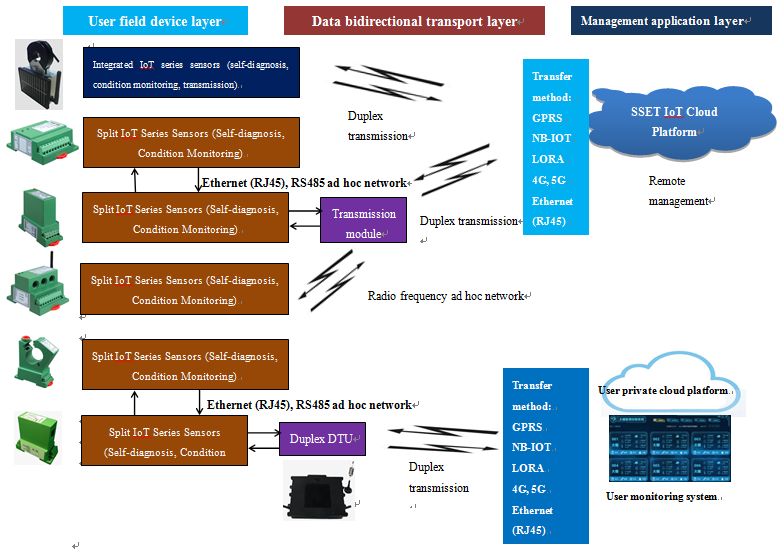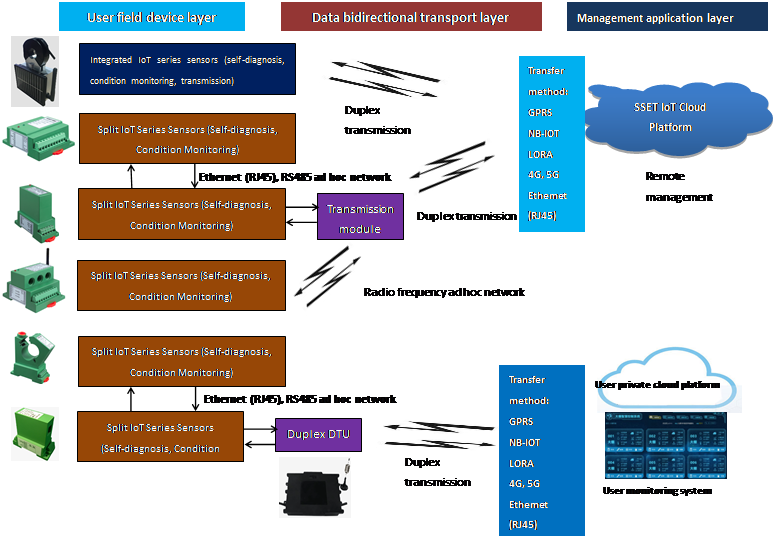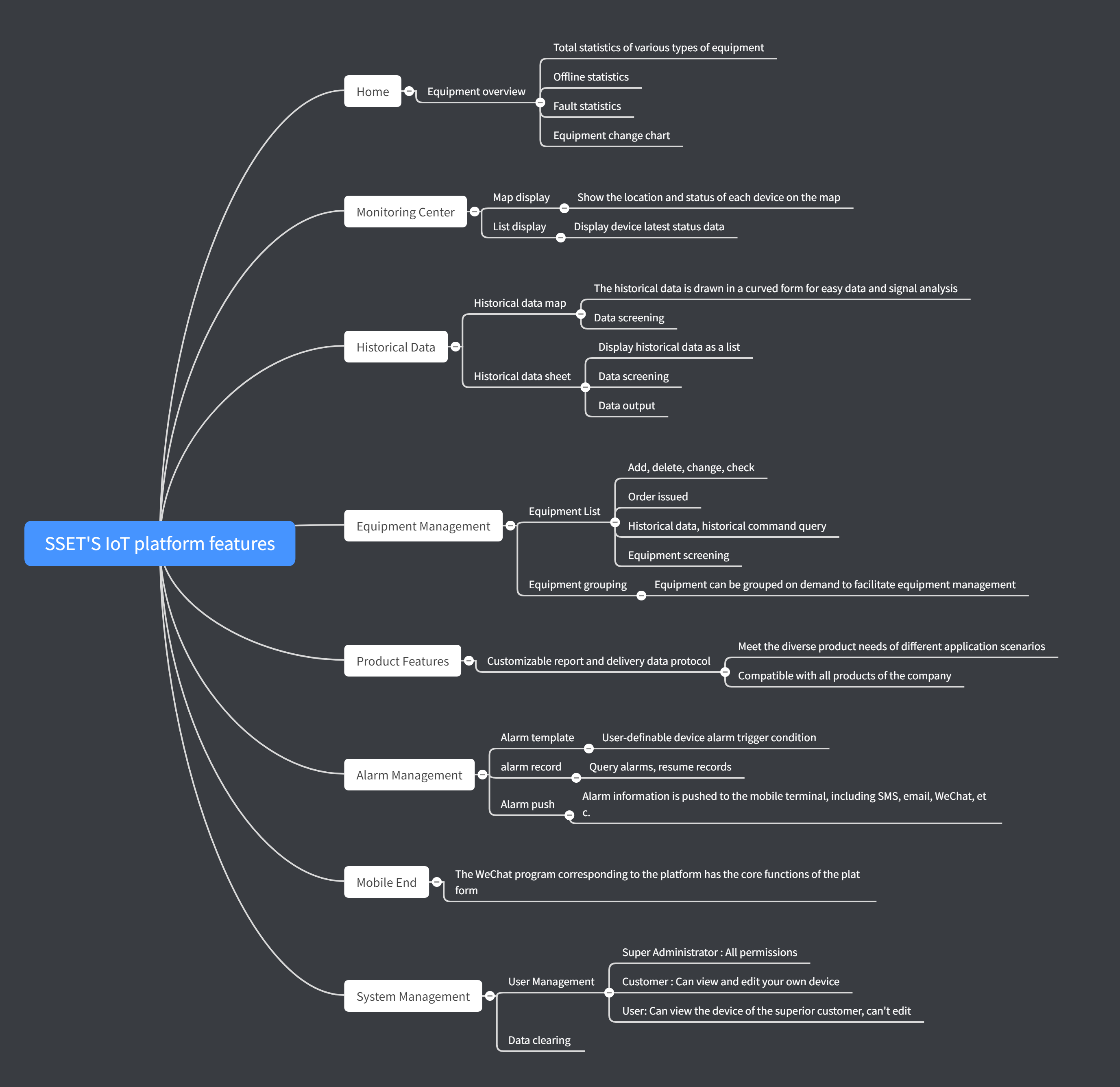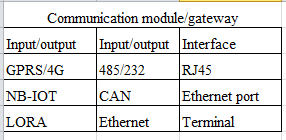Internet of Things cloud sensor and platform

The IoT cloud sensor is a series of sensors based on cloud platform application technology, intelligent measurement, monitoring technology, clock and environmental parameters (temperature, humidity, location, etc.). It is not only featured in wireless transmission, but also has unique remote management functions such as data measurement, threshold setting, clock synchronization, measurement time setting, acquisition cycle setting, alarm setting, interference detection, software update and so on. The product is upgraded from a single measurement to the function of measurement, monitoring, judgment and alarm. It is very suitable for measurement, monitoring and state judgment in the industrial field.
The main functions of the system:
1 Signal Acquisition: Support current, voltage, power, frequency, active power, reactive power, temperature, capacitance, lightning strike parameters, etc.
2 State Judgment: It can flexibly judge the normal, abnormal, damaged and other states of the monitored points.
3 Networking mode: Flexible and convenient combination of wireless and wired methods for system monitoring units.
4 Remote duplex: Two-way communication and setting management functions among the sensor and the cloud platform and the user system. For details, see the “Duplex” function table.
5 Self-diagnosis: The intelligent series of sensors can be used to monitor the interference of power, input, output, and key points in its own.
6 Transmission mode: wireless transmission with GPRS, NB-IOT, LORA, 4G, 5G, etc., and multiple wired and wireless conversion modes.
7 Alarm service: alarms for the abnormality and damage of the device through APP, WeChat, webpage, SMS, etc.
8 Data Services: Provide following services according to Big Data on Cloud Platform:
1) Equipment status service: services about normal, deterioration, interference, error, alarm, etc.
2) Equipment quality service: using interference, error and alarm data to provide users with product quality and performance analysis data. 3) Equipment maintenance service: time, location, and self-diagnosis data provide users with accurate and timely maintenance information.
4) Data analysis services: functional model analysis services such as numbers, trend graphs, and limit condition query.
5) Model data service: use the time period, mean value, typical value and error value in the remote “duplex” to establish various equipment state model data, convenient for customers to analyze and judge.
6) Error diagnosis service: use synchronous clock, error data, intelligent products, model data, etc. in remote "duplex" to provide multi-point data and multi-product data at error time to accurately restore error status for diagnostic purposes.
7) Big Data Services: Analysis of the above big data (data, modeling, judgment).
1 System composition overview:

2 Internet of Things cloud platform features:

1 System composition overview:

2 Internet of Things cloud platform features:

5
1 System configurations:
1.1 IoT series sensors: using the original 12 types of sensors to determine the measuring type, range and performance + "duplex" function selection;
1.2 Smart series sensors: using the original 12 types of sensors to determine the measuring type, range and performance + "duplex" function selection;
1.3 Two-way transmission module: Used for two-way transmission and remote management between wired and wireless; can be directed to the users’ private cloud or the SSET platform;
1.4 Two-way DTU gateway: for two-way transmission and remote management between sensors and user-owned cloud or monitoring management platform;;
1.5 Remote setting management: for users’ private cloud, monitoring management platform; remote setting management between SSET cloud platform and sensors;
1.6 IoT cloud platform: Used for remote setting management and big data analysis between SSET cloud platform and sensors.
2 Performance of each part of the system:
2.1 Sensor:
1) The original 12 types of sensors are detailed in the catalog;
2) For details on the "Duplex" function, please refer to "Remote Settings Management"
3) Smart Series Sensors: self-diagnostic and selection of interference functions is shown in the table below.
2.2 Two-way communication module and gateway:
1) Transmission options:

2) The transmission module’s input/output and the information transmission are both bidirectional to ensure data transmission and remote setting between the sensor and the platform;
2.3 Remote settings management
It is used for remote setting and management between users’ private cloud or monitoring management platform, SSET cloud platform and sensors; the function is shown in the following table:
IoT series sensor "duplex" function summary table
Type | Name | Description | Setting range | Precision | Method to realize |
Acquisition settings | Signal mean | Select the acquired data for a certain period of time to obtain the mean (number of times and time period) | Customize | Accurate | Platform processing |
Acquisition cycle | Based on the signal period, the number of cycles can be selected by oneself | Customize | Accurate | Hardware + platform settings | |
Users can set the threshold value of acquisition freely according to the measuring requirements. | Customize | Accurate | Hardware + platform settings | ||
Collection points | The total number of samples from the start to the end of acquisition, based on the signal period | >0 | Accurate | Hardware + platform settings | |
Acquisition rate | Acquisition points per unit time | >0 | Accurate | Hardware + platform settings | |
Acquisition moment | The record of starting time of acquired data | 0-24H | 1S | Hardware + platform settings | |
Synchronization time | Single sensor time synchronization setting | 0-24H | 1S | Hardware + platform settings | |
Multiple sensors time synchronization settings | 0-24H | 1S | Hardware + platform settings | ||
Communication wake up | Wake up after each fixed communication | 0-24H | 1S | Hardware + platform settings | |
Wake up at fixed time every day | 0-24H | 1S | Hardware + platform settings | ||
Wake up based on wake threshold | Customize | 1S | Hardware + platform settings | ||
Wake up according to above combinational logic "or" and "and" relationship priority | Customize | 1S | Hardware + platform settings | ||
Access at any time while maintaining communication and view real-time data | Customize | 1S | Hardware + platform settings | ||
Threshold and alarm | Alarm Settings | Overvoltage, undervoltage, overcurrent, lack of equal | Customize | Accurate | Hardware + platform settings |
Alarm mode | APP, WeChat, webpage, SMS, etc. | Customize | Accurate | Platform settings | |
Acquisition threshold | Set within the monitoring range, (overvoltage, undervoltage, overcurrent, lack of equal) | Customize | Accurate | Hardware + platform settings | |
Alarm threshold | Upper and lower limits of alarm threshold | Customize | 1% | Hardware + platform settings | |
Wake-up threshold | Threshold value of starting communication | Customize | 1% | Hardware + platform settings | |
Battery alarm | Low-level threshold alarm value | Customize | 1% | Hardware + platform settings | |
Intelligent | Self-monitoring | Interference peak, time, duration, energy and other upper limit setting and alarm function prompt and traceability | Customize | 1% | Hardware + platform settings |
Self-diagnosis | Input, output, power, communication state, self-diagnosis function and error alarm function prompt and traceability | Customize | Accurate | Hardware + platform settings | |
Take action after diagnosis. Such as reset, power off, etc. | Customize | Accurate | Hardware + platform settings | ||
Transmission | Rate | Data transfer rate | Customize | Hardware + platform settings | |
Capacity | Data volume per transmission | Customize | Hardware + platform settings | ||
Multiple communication protocol support | Support Modbus, transparent transmission and customization | Customize | Hardware + platform settings | ||
Wireless ad hoc network | Short-range wireless communication within 100 meters, both wired and wireless | Customize | Hardware + platform settings | ||
Direction | Modify hardware data transmission pointing platform | Customize | Hardware | ||
Location | Device number | Device unique identification code, for example: IMEI.MAC | Hardware + platform processing | ||
Map location | Select / self-enter address | Customize | Platform processing | ||
Protection | Error data | Save, read, and upload data before failure | Yes | Hardware + platform processing | |
Reconnection | Automatically repair network connectivity after the node power failure or the device disconnection | Yes | Hardware | ||
Measurement | Read type | Select the type of measured parameter | Customize | Hardware + platform settings | |
Range | Select the range of measured parameter | Customize | Hardware + platform settings | ||
Data | Maximum storage alarm | Maximum storage alarm | Customize | Hardware + platform settings | |
Data export | Data export format is optional (PDF/EXL) | Customize | Platform processing | ||
Software update | The monitoring unit software can be remotely updated via the SSET IoT or user platform. | Optional | Hardware + platform settings | ||
2.4 Networking function:
In order to facilitate the users’ system installation, the system has developed wired/wireless, hybrid and other networking modes:
1) Wireless networking:
l Within 20 meters, use our RF module networking, with 20 networking units Max;
l Within 500 meters, use our LORA module networking, with 200 networking units Max;
l Within 5000 meters, use our LORAWAN gateway networking, with 500 networking units Max.
2) Wired networking: 485/232, CAN, etc.
3) Hybrid networking: Customer can use above wired/wireless and different transmission modules to effectively organize the local area network.
7

